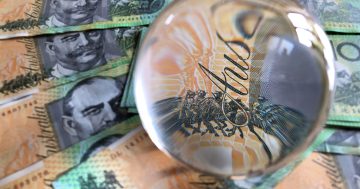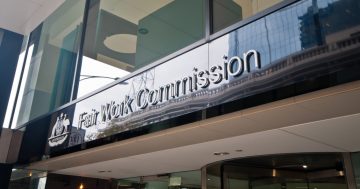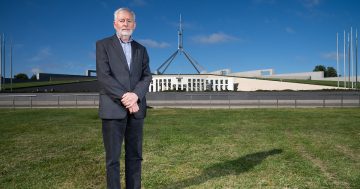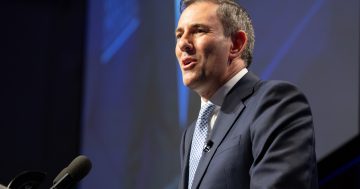Gareth Hutchens* says inflation is not ‘out of control’, but interest rates may have to rise this year.
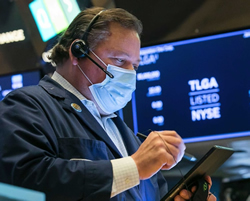 Australian consumers saw prices rise by 3.5 per cent last year.
Australian consumers saw prices rise by 3.5 per cent last year.
It was the fastest annual increase in prices in years.
What does it mean?
It means Australia hasn’t avoided inflation increasing, like we’re seeing overseas.
And that means authorities may start lifting interest rates this year, which is sooner than they were planning.
It also has implications for wages growth and house prices this year.
Inflation running at 3.5 per cent
Most of the price increases facing consumers in Australia last year were driven by pandemic-related economic disruptions.
Record-high prices for automotive fuel pushed transport costs higher, and that fed through to higher freight costs for a range of goods.
There were large increases in the price of building materials, and that fed through to higher prices for new dwellings, major renovations and maintenance.
According to the Bureau of Statistics, high levels of building construction activity, combined with shortages of materials and labour, contributed to six consecutive months of the largest rise in new dwelling prices since September 2000.
New dwelling prices also increased for consumers after the federal government’s HomeBuilder grant began to peter out, because the grant was reducing out-of-pocket expenses for new dwellings being purchased.
When you look at the goods and services that saw price increases, you’ll also see consumers couldn’t avoid many of them.
“Discretionary” items are things we can choose to buy, but don’t necessarily have to.
But “non-discretionary” items are things we can’t often avoid, such as as food, automotive fuel, housing and health costs.
As the ABS shows, in the December quarter last year, the prices of non-discretionary items were rising much faster than discretionary items.
Inflation is not ‘out of control’
The inflation we saw in Australia last year was high by recent historical standards for Australia, but it was still low compared to other comparable countries.
And when you strip out the prices of goods and services that rose because of pandemic-related economic disruptions, the level of inflation was still quite low.
The ‘underlying’ inflation rate (2.6 per cent) is currently much lower than the United States (5.5 per cent), UK (4.2 per cent), and Canada (3.4 per cent).
But that doesn’t mean the lift in inflation should be dismissed.
It puts inflation very close to the middle of the Reserve Bank’s 2-3 per cent inflation target.
The Reserve Bank has been caught by surprise by the pace of inflation over the past six months, and some economists say it will probably have to lift interest rates this year to ensure inflation doesn’t run away.
The independent economist Saul Eslake says the argument at the moment is not that the RBA needs to panic that inflation could be “out of control” — because it isn’t — but rather, that real interest rates are lower than they “should be” given the current condition of and outlook for the economy.
He said the pace of jobs growth was still robust, and there was a lot of stimulus in the economy, so the RBA would have to scrap its quantitative easing program soon.
“I think they will have to start laying the groundwork for at least one rate rise later this year,” he tweeted on Tuesday.
For much of last year, RBA officials were adamant that they wouldn’t lift the cash rate target until 2024.
What about wages and property prices?
Gareth Aird, a Commonwealth Bank economist, says Australia’s labour market will keep tightening this year, meaning even more people will find jobs and the unemployment rate will fall line below its already-low 4.2 per cent.
He said inflationary pressures would also stick around in 2022, with implications for wages growth.
“The labour market is incredibly tight and we believe a material acceleration in wages growth is forthcoming,” Mr Aird said.
“Higher inflation outcomes will feed into higher wages outcomes; there is something of a chicken and egg relationship between inflation and wages outcomes.”
On property prices, economists say the chance of higher interest rates this year will put downward pressure on property prices, which will be good news for people who are trying to crack into the market.
Last week, AMP Capital’s chief economist Shane Oliver said rising fixed mortgage rates (and rising variable rates later this year) could be expected to slow home price gains to 5 per cent this year and push prices down next year as higher rates restricted the amount new buyers could borrow.
The major banks have similar property price forecasts of modest increases this year followed by small to moderate falls in 2023.
So if the Reserve Bank starts lifting the official cash rate this year it will feed into that dynamic.
*Gareth Hutchens is a business and economics reporter based in Canberra. He can be contacted on Twitter: @grhutchens.
This article first appeared at abc.net.au.


